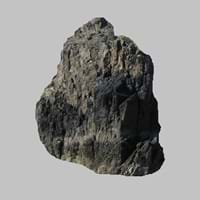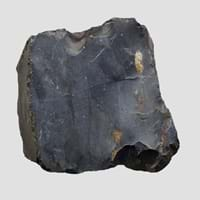Definition
Metapelite is an old and currently not widely used field geological term for a clay rich fine-grained clastic sediment or sedimentary rock, i.e. mud or a mudstone
Chert is a hard, dark, opaque sedimentary rock which is composed of silica with an amorphous fine-grained texture
Discoverer
Unknown
Unknown
Etymology
From Pelos or clay in Greek
From flint-like quartz, 1670s, of unknown origin- a local term, which has been taken into geological use
Class
Metamorphic Rocks
Sedimentary Rocks
Sub-Class
Durable Rock, Medium Hardness Rock
Durable Rock, Hard Rock
Group
Not Applicable
Not Applicable
Other Categories
Coarse Grained Rock, Fine Grained Rock, Medium Grained Rock, Opaque Rock
Fine Grained Rock, Opaque Rock
Texture
Foliated
Banded, Rough
Color
Dark Greenish - Grey, Green, Light Green, Light Greenish Grey
Black, Brown, Green, Grey, Red, White
Durability
Durable
Durable
Scratch Resistant
Yes
Yes
Appearance
Banded
Glassy or Pearly
Interior Uses
Decorative Aggregates, Interior Decoration
Decorative Aggregates, Homes
Exterior Uses
As Building Stone, As Facing Stone
As Building Stone, As Facing Stone, Garden Decoration, Office Buildings
Other Architectural Uses
Curbing
Curbing
Construction Industry
Cement Manufacture, Construction Aggregate, for Road Aggregate
Arrowheads, Construction Aggregate, Cutting Tool, Spear Points
Medical Industry
Not Yet Used
Not Yet Used
Antiquity Uses
Artifacts
Artifacts, Monuments
Commercial Uses
Commemorative Tablets, Creating Artwork
Creating Artwork, Gemstone, In fire-starting tools, Jewelry, To ignite fire, Used in flintlock firearms
Types
Not Available
Flint, Jasper, Radiolarite, Common Chert, Chalcedony, Agate, Onyx, Opal, Magadi-type Chert, Porcelanite, Siliceous Sinter
Features
Easily splits into thin plates, It is One of the Oldest, Strongest and Hardest Rock
Clasts are smooth to touch, Easily splits into thin plates, Has High structural resistance against erosion and climate
Archaeological Significance
Monuments
Not Yet Used
Used
Famous Monuments
Not Applicable
Data Not Available
Sculpture
Not Yet Used
Not Yet Used
Famous Sculptures
Not Applicable
Not Applicable
Pictographs
Used
Not Used
Petroglyphs
Used
Not Used
Figurines
Not Yet Used
Not Yet Used
Formation
Due to change in environmental conditions, rocks are heated and pressurized deep inside the Earth's surface. Metapelite is formed from the extreme heat caused by magma or by the intense collisions and friction of tectonic plates.
Chert forms when microcrystals of silicon dioxide grow within soft sediments that become limestone or chalk. The chert formation can be either of chemical or biological origin.
Mineral Content
Albite, Chlorite, Quartz
Quartz, Silicon
Compound Content
Aluminium Oxide, CaO, MgO
Silicon Dioxide
Types of Metamorphism
Not Applicable
Not Applicable
Types of Weathering
Biological Weathering, Chemical Weathering, Mechanical Weathering
Not Applicable
Types of Erosion
Chemical Erosion, Coastal Erosion, Water Erosion, Wind Erosion
Chemical Erosion
Grain Size
Medium to Fine Coarse Grained
Very fine-grained
Fracture
Fibrous
Uneven, Splintery or Conchoidal
Porosity
Highly Porous
Highly Porous
Luster
Earthy
Waxy and Dull
Compressive Strength
Not Available
Cleavage
Not Available
Non-Existent
Toughness
Not Available
1.5
Specific Gravity
3.4-3.7
2.5-2.8
Transparency
Opaque
Translucent to Opaque
Density
0-300 g/cm3
2.7 g/cm3
Resistance
Heat Resistant, Impact Resistant, Pressure Resistant
Heat Resistant, Impact Resistant, Pressure Resistant, Wear Resistant
Deposits in Eastern Continents
Asia
Not Yet Found
China, India, Iran, Japan, Oman, Russia, Saudi Arabia, Taiwan, Thailand, Vietnam
Africa
Western Africa
Kenya, Morocco, South Africa, Tanzania
Europe
United Kingdom
Austria, France, Greece, Italy, Malta, Poland, Portugal, Serbia, Spain, Sweden, United Kingdom
Others
Not Yet Found
Greenland, Mid-Atlantic Ridge
Deposits in Western Continents
North America
Not Available
Canada, Mexico, USA
South America
Brazil, Colombia, Ecuador
Bolivia, Brazil
Deposits in Oceania Continent
Australia
Central Australia, Western Australia
New South Wales, Queensland, South Australia, Western Australia
All about Metapelite and Chert Properties
Know all about Metapelite and Chert properties here. All properties of rocks are important as they define the type of rock and its application. Metapelite belongs to Metamorphic Rocks while Chert belongs to Sedimentary Rocks.Texture of Metapelite is Foliated whereas that of Chert is Banded, Rough. Metapelite appears Banded and Chert appears Glassy or Pearly. The luster of Metapelite is earthy while that of Chert is waxy and dull. Metapelite is available in dark greenish - grey, green, light green, light greenish grey colors whereas Chert is available in black, brown, green, grey, red, white colors. The commercial uses of Metapelite are commemorative tablets, creating artwork and that of Chert are creating artwork, gemstone, in fire-starting tools, jewelry, to ignite fire, used in flintlock firearms.










